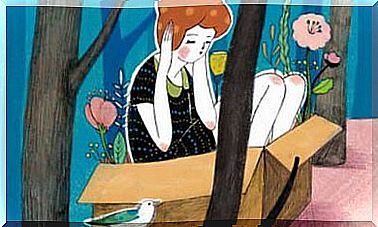Ten Ideas To Increase Children’s Creativity

Unlike what many think, creativity is a skill with which we are all born, but throughout life and especially during childhood we take care not to force it and in the worst case to kill it. Many times it is schools that kill creativity with stereotypical, repetitive and obsolete activities in which teaching subjects such as mathematics or English based on a book and blackboard has a higher priority than using novel techniques that promote creativity in the child.
Many times the lack of these techniques on the part of many teachers is due to ignorance, lack of motivation on their part or fear that children will get out of control in class with different activities. But creative thinking is a great engine of social and economic development in a country. Creative kids are the scientists, engineers, and entrepreneurs of the future. In addition, a child who is allowed to develop all his creative potential and is applauded for it, is a more self-confident child today and a more secure adult tomorrow, with greater self-esteem and happier, has more personal relationships healthy and learn to see different points of view more easily, as well as learning to understand frustration and resolve difficult situations more calmly and clearly.
How can we make our child or our student develop their creativity?
Here we propose some activities:
1. Take a creative excursion once a week. A visit to a museum and participate in the workshops they organize for children, go to the park and observe animals or plants or discover new places etc.
2. Give your child at least one hour a day for his own games. Too many extracurricular activities are not beneficial.
3. Make sure you always have the simplest possible pieces among your toys. Paper, pencils, modeling clay, watercolors, building blocks, things to dress up… as they are powerful creative weapons. A story, a block of buildings, a poem or a painting can be made with these simple things.
4. Let him play alone. Sometimes accompany him so that he feels your support and your affection, but it is good that he only invents his own games, that he investigates, you do not finish the games for him.
5. Before going to sleep, tell him a story and have him finish the story, praise him and finally ask him what his best moment of the day has been, so that he can consolidate memories and positive actions in his mind.
6. Play games that involve a large dose of creativity such as the game “what is this for”, consists of getting all the possible and implausible utilities that can have, for example, a box of matches, a toothbrush or an orange peel. Make sure he gives more answers than you.
7. Never laugh at their ideas, no matter how bizarre they may seem to you. On the contrary, he uses phrases such as What a good idea! What a fun invention! Tell me again, I loved it! Etc.
8. Limit computer and television time. They give it all done. If you establish a schedule from a young age, they will get used to when it is time and when not to watch TV or play video games.
9. Put his drawings on the walls, on the door of the refrigerator … on the one hand it increases his self-confidence when he sees that you like his drawings and on the other you make the home a creativity workshop. You can also put a cork mural on the wall of his room, with his drawings, poems, to motivate him you can put one in your room with things that you create, children learn by imitation.
10. Puppet games, shadow games, or letting him do and see how the cotton and legume plants develop each day also encourage his creativity.
from the point of view of Art History? from childhood to museums
Try talking to them about the play
Photo courtesy of Angela Waye









